Bio-Based Impregnated Resin Preparation for Aldehyde-Free Decorative Paper Production
Abstract
:1. Introduction
2. Materials and Methods
2.1. Materials
2.2. Preparation of Quaternized Cellulose Nanofibrils (Q-CNFs)
2.3. Synthesis of Aqueous Acrylate Emulsion
2.4. Formulation of Bio-Based Impregnated Resin
2.5. Preparation of the Impregnated Paper
2.6. Surface Charge Density and Zeta-Potential Analysis
2.7. Spectrometry Analysis (FTIR, XPS, and XRD)
2.8. Microscopy Analysis (TEM and SEM)
2.9. Rheology Analysis of the Resin
2.10. Thermal Analysis
2.11. Formaldehyde Emission Determination
2.12. Resistance Performance of the Impregnated Paper
3. Results and Discussion
3.1. Chemical Characterization of the Bio-Based Impregnated Resin
3.2. Thermal Analysis of the Bio-Based Impregnated Resin
3.3. Rheological Analysis of the Bio-Based Impregnated Resin
3.4. Morphological Analysis of the Decoration Paper Coated with Resins
3.5. Mechanical Strength and Free Formaldehyde Emission Evaluation
4. Conclusions
Author Contributions
Funding
Institutional Review Board Statement
Informed Consent Statement
Data Availability Statement
Conflicts of Interest
References
- Fang, L.; Lu, X.; Mo, X.; Zhang, X.; Gui, C. Performance of Impregnated Paper Decorated Blockboard Manufactured Using HDF as Equilibrium Layer. Materials 2022, 15, 342. [Google Scholar] [CrossRef]
- Feng, Y.; Qu, W.; Wu, Y.; Zhang, J.; Peng, L. Crack-resistant melamine/formaldehyde-impregnated paper-decorated panels using blocked isocyanates as a temperature-responsive crosslinker. Prog. Org. Coat. 2022, 173, 107211. [Google Scholar] [CrossRef]
- Thebault, M.; Li, Y.; Beuc, C.; Fromel-Frybort, S.; Zikulnig-Rusch, E.-M.; Kutuzova, L.; Kandelbauer, R. Impregnated Paper-Based Decorative Laminates Prepared from Lignin-Substituted Phenolic Resins. J. Renew. Mater. 2020, 8, 1181–1198. [Google Scholar] [CrossRef]
- Gonçalves, D.; Bordado, J.M.; Marques, A.C.; Galhano dos Santos, R. Non-Formaldehyde, Bio-Based Adhesives for Use in Wood-Based Panel Manufacturing Industry—A Review. Polymers 2021, 13, 4086. [Google Scholar] [CrossRef] [PubMed]
- Zhang, J.; Xi, X.; Liang, J.; Pizzi, A.; Du, G.; Deng, S. Tannin-based adhesive cross-linked by furfuryl alcohol-glyoxal and epoxy resins. Int. J. Adhes. Adhes. 2019, 94, 47–52. [Google Scholar] [CrossRef]
- Ferdosian, F.; Pan, Z.; Gao, G.; Zhao, B. Bio-Based Adhesives and Evaluation for Wood Composites Application. Polymers 2017, 9, 70. [Google Scholar] [CrossRef] [Green Version]
- Vnučec, D.; Kutnar, A.; Goršek, A. Soy-based adhesives for wood-bonding—A review. J. Adhes. Sci. Technol. 2016, 31, 910–931. [Google Scholar] [CrossRef]
- Zhu, W.; Ji, M.; Chen, F.; Wang, Z.; Chen, W.; Xue, Y.; Zhang, Y. Formaldehyde-free resin impregnated paper reinforced with cellulose nanocrystal (CNC): Formulation and property analysis. J. Appl. Polym. Sci. 2020, 137, 48931. [Google Scholar] [CrossRef]
- Cai, L.; Li, Y.; Lin, X.; Chen, H.; Gao, Q.; Li, J. High-performance adhesives formulated from soy protein isolate and bio-based material hybrid for plywood production. J. Clean. Prod. 2022, 353, 131587. [Google Scholar] [CrossRef]
- Podlena, M.; Böhm, M.; Saloni, D.; Velarde, G.; Salas, C. Tuning the Adhesive Properties of Soy Protein Wood Adhesives with Different Coadjutant Polymers, Nanocellulose and Lignin. Polymers 2021, 13, 1972. [Google Scholar] [CrossRef]
- Olszewska, A.; Eronen, P.; Johansson, L.-S.; Malho, J.-M.; Ankerfors, M.; Lindström, T.; Ruokolainen, J.; Laine, J.; Österberg, M. The behaviour of cationic NanoFibrillar Cellulose in aqueous media. Cellulose 2011, 18, 1213–1226. [Google Scholar] [CrossRef]
- Xu, J.; Hu, H. Preparation and characterization of styrene acrylate emulsion surface sizing agent modified with rosin. J. Appl. Polym. Sci. 2012, 123, 611–616. [Google Scholar] [CrossRef]
- Hasani, M.; Cranston, E.D.; Westman, G.; Gray, D.G. Cationic surface functionalization of cellulose nanocrystals. Soft Matter 2008, 4, 2238–2244. [Google Scholar] [CrossRef]
- ISO 1924-2:2008; Paper and Board—Determination of Tensile Properties—Part 2: Constant Rate of Elongation Method (20 mm/min). ISO: Geneva, Switzerland, 2008.
- Klemm, D.; Philipp, B.; Heinze, T.; Heinze, U.; Wagenknecht, W. Comprehensive Cellulose Chemistry; Wiley: Hoboken, NJ, USA, 1998. [Google Scholar] [CrossRef]
- Song, Y.; Sun, Y.; Zhang, X.; Zhou, J.; Zhang, L. Homogeneous Quaternization of Cellulose in NaOH/Urea Aqueous Solutions as Gene Carriers. Biomacromolecules 2008, 9, 2259–2264. [Google Scholar] [CrossRef]
- Pei, A.; Butchosa, N.; Berglund, L.A.; Zhou, Q. Surface quaternized cellulose nanofibrils with high water absorbency and adsorption capacity for anionic dyes. Soft Matter 2013, 9, 2047. [Google Scholar] [CrossRef]
- Belaidi, O.; Bouchaour, T.; Maschke, U. AM1 and DFT: Conformational and vibrational spectra analysis of butyl methacrylate. Int. J. Chem. Anal. Sci. 2013, 4, 185–196. [Google Scholar] [CrossRef]
- Mamiński, M.Ł.; Król, M.; McDonald, A.G.; McIlroy, D.N.; Niraula, I.B.; Czechowska, J.; Parzuchowski, P. Thermally initiated solvent-free radical modification of beech (Fagus sylvatica) wood. Wood Sci. Technol. 2013, 47, 1019–1031. [Google Scholar] [CrossRef] [Green Version]
- Alothman, Z.A. Preparation and characterization of alkyl methacrylate capillary monolithic columns. J. Saudi Chem. Soc. 2012, 16, 271–278. [Google Scholar] [CrossRef] [Green Version]
- Park, S.; Baker, J.O.; Himmel, M.E.; Parilla, P.A.; Johnson, D.K. Cellulose crystallinity index: Measurement techniques and their impact on interpreting cellulase performance. Biotechnol. Biofuels 2010, 3, 10. [Google Scholar] [CrossRef] [Green Version]
- Moulder, J.F.; Chastain, J.E. Handbook of X-ray Photoelectron Spectroscopy: A Reference Book of Standard Spectra for Identification and Interpretation of XPS Data; Perkin-Elmer Corporation, Physical Electronics Division: Eden Prairie, MN, USA, 1992. [Google Scholar]
- Castner, D.G.; Ratner, B.D. Surface characterization of butyl methacrylate polymers by XPS and static SIMS. Surf. Interface Anal. 1990, 15, 479–486. [Google Scholar] [CrossRef]
- Major, G.H.; Fairley, N.; Sherwood, P.M.A.; Linford, M.R.; Terry, J.; Fernandez, V.; Artyushkova, K. Practical guide for curve fitting in X-ray photoelectron spectroscopy. J. Vac. Sci. Technol. A 2020, 38, 061203. [Google Scholar] [CrossRef]
- Dinu, R.; Mija, A. Bio-Based Epoxy Resins and Composites from Epoxidized Linseed Oil Crosslinked with Different Cyclic Anhydrides and Their Combination with Lignin. Cellul. Chem. Technol. 2020, 54, 925–938. [Google Scholar] [CrossRef]
- Nechyporchuk, O.; Belgacem, M.N.; Pignon, F. Current Progress in Rheology of Cellulose Nanofibril Suspensions. Biomacromolecules 2016, 17, 2311–2320. [Google Scholar] [CrossRef] [PubMed]
- Kopač, T.; Krajnc, M.; Ručigaj, A. A rheological study of cationic micro- and nanofibrillated cellulose: Quaternization reaction optimization and fibril characteristic effects. Cellulose 2022, 29, 1435–1450. [Google Scholar] [CrossRef]
- Devallencourt, C.; Saiter, J.M.; Capitaine, D. Reactions between melamine formaldehyde resin and cellulose: Influence of pH. J. Appl. Polym. Sci. 2000, 78, 1884–1896. [Google Scholar] [CrossRef]
- Farah, N.H.; Salmah, H.; Marliza, M. Effect of Butyl Methacrylate on Properties of Regenerated Cellulose Coconut Shell Biocomposite Films. Procedia Chem. 2016, 19, 335–339. [Google Scholar] [CrossRef] [Green Version]
- Japan Agricultural Standard Glued Laminated Timber; JAS 234; Ministry of Agriculture, Forestry, and Fisheries: Tokyo, Japan, 2003.
- Merline, D.J.; Vukusic, S.; Abdala, A.A. Melamine formaldehyde: Curing studies and reaction mechanism. Polym. J. 2012, 45, 413–419. [Google Scholar] [CrossRef] [Green Version]
- Park, B.-D.; Lee, S.-M.; Roh, J.-K. Effects of formaldehyde/urea mole ratio and melamine content on the hydrolytic stability of cured urea-melamine-formaldehyde resin. Eur. J. Wood Wood Prod. 2008, 67, 121–123. [Google Scholar] [CrossRef]
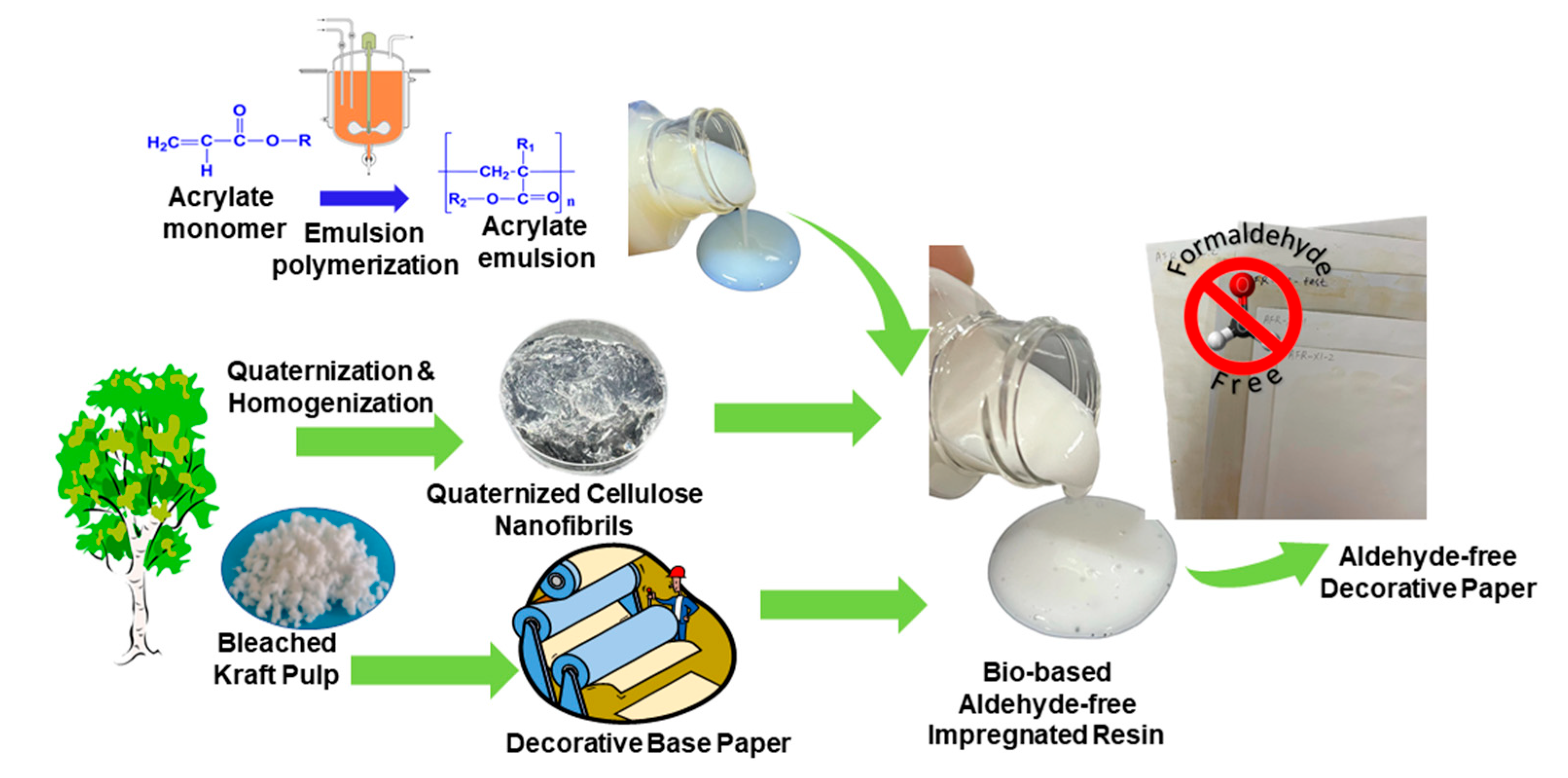
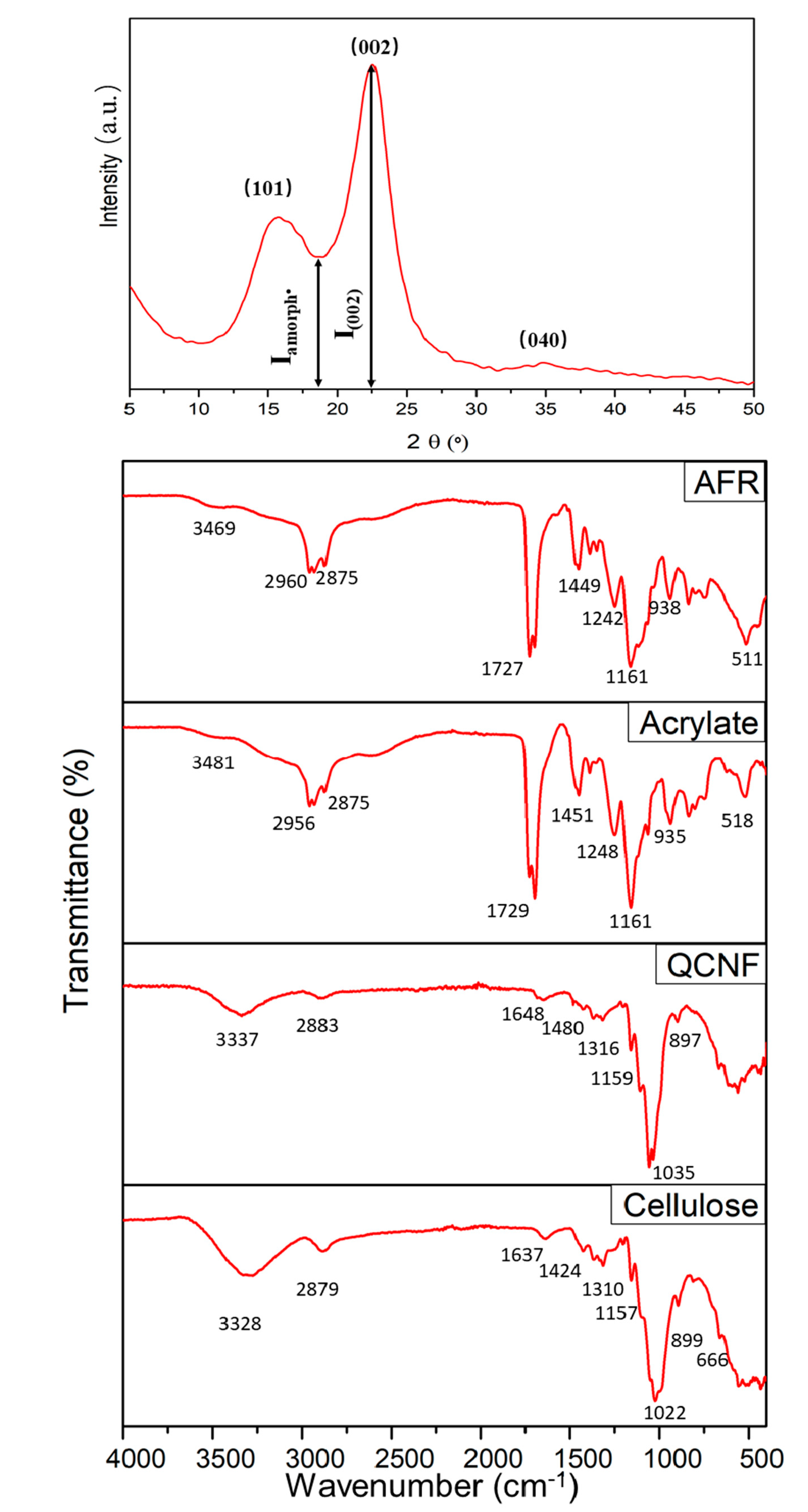
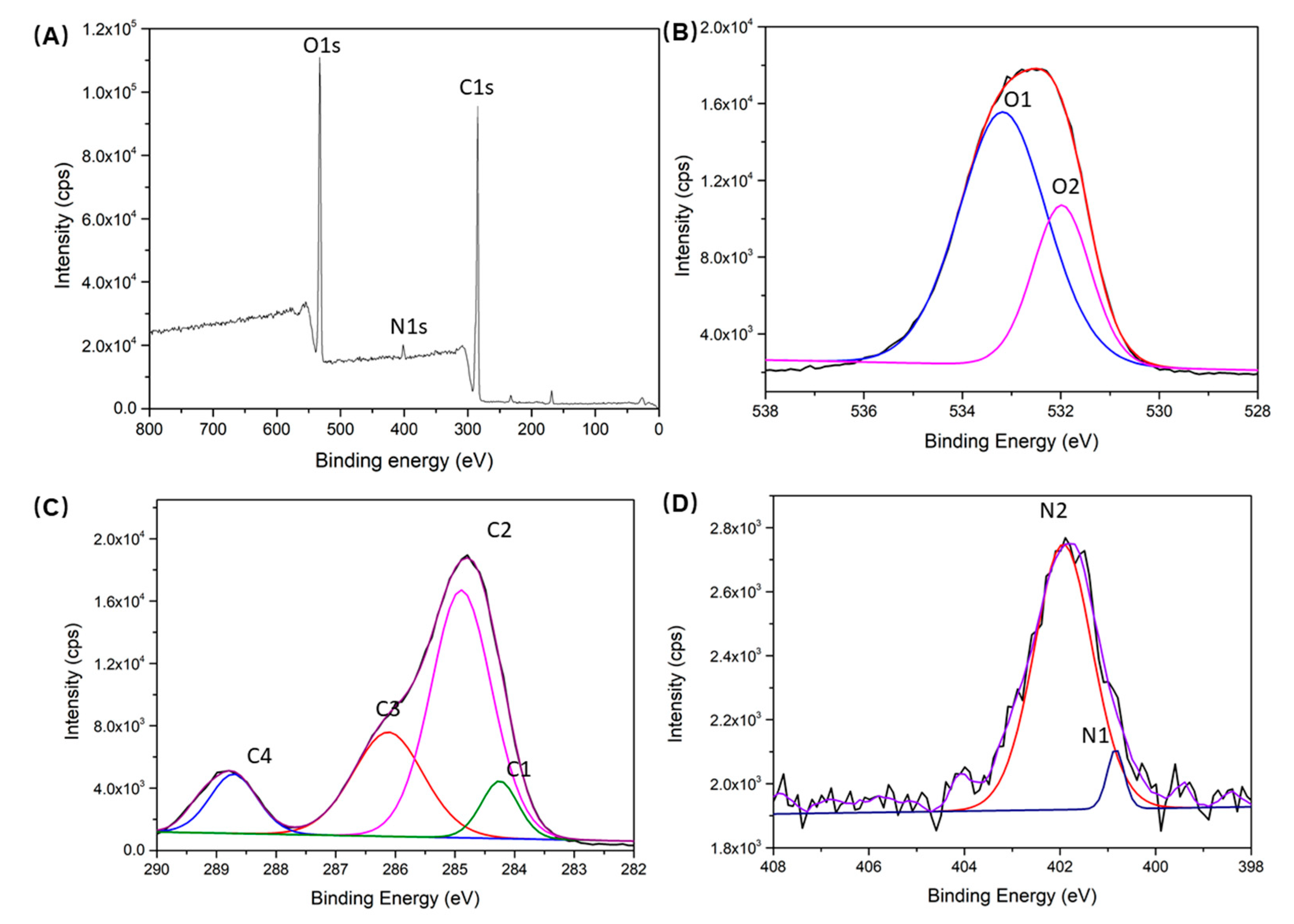
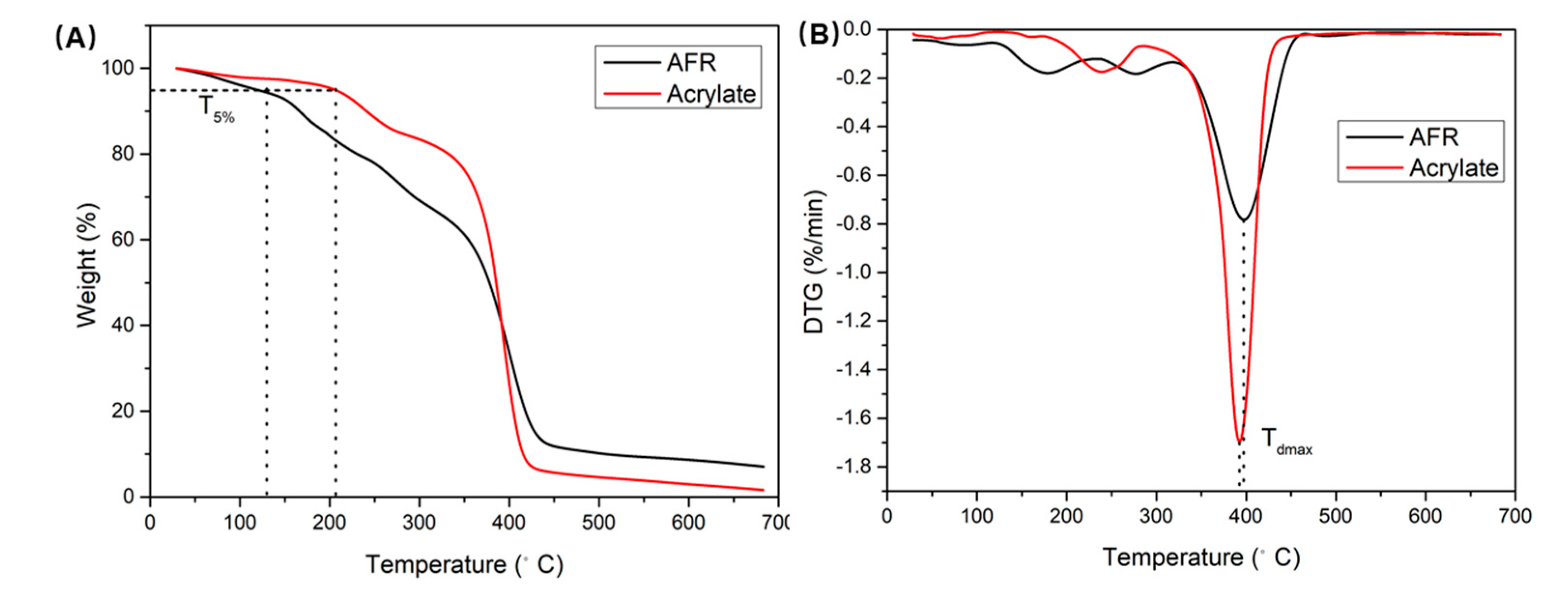

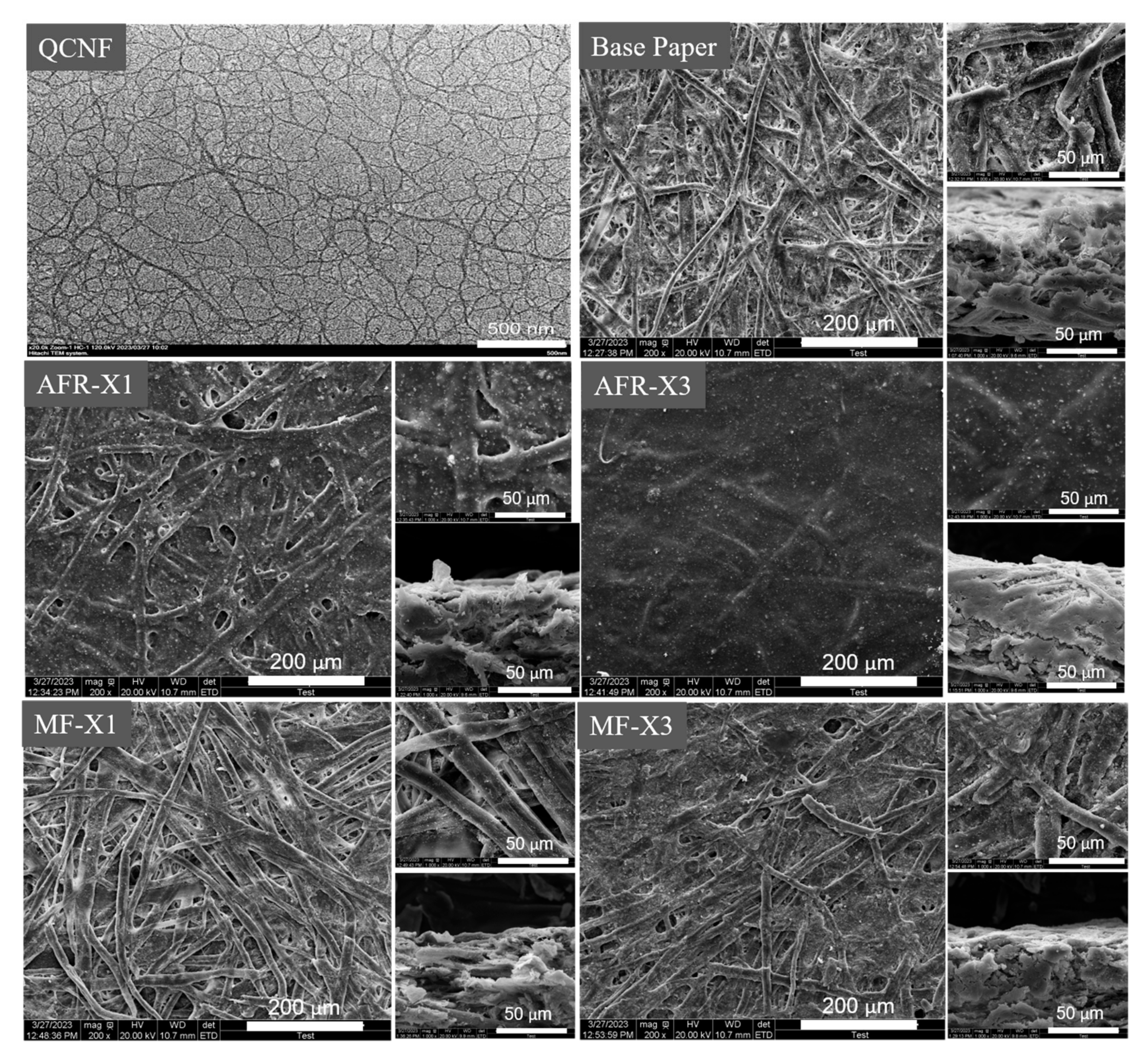
| Title 1 | Base Paper | AFR-X1 | AFR-X3 | MF-X1 | MF-X3 |
|---|---|---|---|---|---|
| Tensile strength (kN/m) | 2.6 ± 0.1 | 3.4 ± 0.2 | 3.2 ± 0.2 | 3.2 ± 0.3 | 5.0 ± 0.7 |
| Coating weight (g/m2) | 0 | 4.0 ± 1.2 | 18.8 ± 0.3 | 4.5 ± 0.4 | 19.0 ± 3.2 |
| Contact angle (°, 0.1 s) | 14.8 | 87.2 ± 2.1 | 78.1 ± 1.9 | 35.1 ± 8.0 | 74.6 ± 3.3 |
| Contact angle (°, 1 s) | ND | 86.0 ± 2.1 | 67.4 ± 5.0 | 25.9 ± 6.2 | 68.1 ± 7.1 |
| Contact angle (°, 10 s) | ND | 83.9 ± 3.3 | 56.0 ± 4.7 | ND | 57.5 ± 10.1 |
| Formaldehyde emission (mg/L) | 0.1 | 0.1 | 0.1 | 0.8 | 1.3 |
Disclaimer/Publisher’s Note: The statements, opinions and data contained in all publications are solely those of the individual author(s) and contributor(s) and not of MDPI and/or the editor(s). MDPI and/or the editor(s) disclaim responsibility for any injury to people or property resulting from any ideas, methods, instructions or products referred to in the content. |
© 2023 by the authors. Licensee MDPI, Basel, Switzerland. This article is an open access article distributed under the terms and conditions of the Creative Commons Attribution (CC BY) license (https://creativecommons.org/licenses/by/4.0/).
Share and Cite
Wang, J.; Liu, J.; Long, L. Bio-Based Impregnated Resin Preparation for Aldehyde-Free Decorative Paper Production. Coatings 2023, 13, 1168. https://doi.org/10.3390/coatings13071168
Wang J, Liu J, Long L. Bio-Based Impregnated Resin Preparation for Aldehyde-Free Decorative Paper Production. Coatings. 2023; 13(7):1168. https://doi.org/10.3390/coatings13071168
Chicago/Turabian StyleWang, Jin, Jun Liu, and Ling Long. 2023. "Bio-Based Impregnated Resin Preparation for Aldehyde-Free Decorative Paper Production" Coatings 13, no. 7: 1168. https://doi.org/10.3390/coatings13071168





